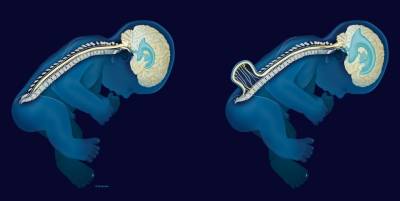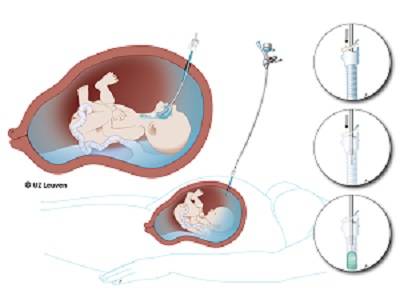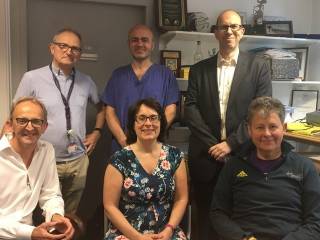Centre for Prenatal Therapy
Our group of clinical and academic fetal medicine doctors, anaesthetists, obstetricians, paediatric surgeons, midwives and theatre nurses are introducing new techniques to the UK to treat fetal defects before birth. We will be the first group in the UK offering open fetal surgery.
The Centre is a hub for research innovation, and is ideally placed within UCL where it can take advantage of existing expertise in experimental and regenerative medicine, biobanking, engineering and computing innovation, and high quality outcome evaluations to support developments in prenatal therapy.
Group Members
- Mr Ruwan Wimalasundera
- Mr Pranav Pandya
- Mr George Attilakos
- Dr Adalina Sacco
- Dr Rosalind Pratt
Collaborators
- Professor Steve Morris, UCL Centre of Applied Health Research
- Centre for Medical Imaging and GIFT-Surg project: Professor Seb Ourselin, Dr Tom Vercauteren, Dr Adrien Desjardins, Dr Andrew Melbourne, Dr David Atkinson and Dr Magda Sokolska (Fetal Magnetic Resonance Imaging)
Funding
The clinical fetal surgery service is funded by Great Ormond Street Children’s Charity and UCLH Charity. The team are also developing minimally invasive fetoscopic tools to improve surgical closure without the need for an open hysterotomy in collaboration with the GIFT-Surg research group at UCL and KU Leuven funded by Wellcome Trust and EPSRC.
Contact: For queries, more information or to refer patients please contact UCLH.FMUmidwife@nhs.net or a.sacco@nhs.net.
Current research projects
- Spina bifida
Spina bifida is a condition in which the spine does not close properly in early development, leaving the spinal cord exposed. The current standard of care is an operation after the baby is born to close the defect. There is now evidence that closing the defect earlier, whilst still in the womb, can lead to better outcomes in certain cases. Please see our information leaflets (below) and UCLH website for more information.

Fig 1. Left: normal situation. Right: spina bifida with brain changes
Research areas:
- Healthcare professional understanding about fetal surgery for spina bifida
- Cost of open fetal surgery for spina bifida
- Patient acceptability of open fetal surgery for spina bifida
- Congenital diaphragmatic hernia
Congenital diaphragmatic hernia (CDH) is a defect of the muscular diaphragm which usually keeps the chest and abdominal cavities separated. This hole in the diaphragm allows abdominal contents such as the bowel or liver to enter the chest cavity in early development, which negatively affects lung development. There is some evidence that temporarily blocking the windpipe will cause lung fluid to build up, which will in turn cause the lungs to grow more.
UCL is participating in the TOTAL trial to test a fetal treatment for CDH. The TOTAL trial (Tracheal Occlusion To Accelerate Lung growth) will test out if fetoscopic endoluminal tracheal occlusion (FETO) leads to better neonatal outcomes in babies with a left sided CDH compared to postnatal surgery of the hernia. We will also be offering FETO as a treatment option for fetuses with a right sided CDH, outside of the trial. We are grateful to CDH-UK charity for funding the occlusive balloons for the trial.

Fig 2. Illustration of the FETO procedure: through a small cut in the mother’s tummy, a miniature telescope is introduced into the mouth of the unborn baby and a balloon is delivered in the trachea. The diagram below shows the introduction of the balloon into the trachea.
Please see our information leaflet and UCLH website for more information.
Research areas:
In collaboration with KULeuven we are researching:
- Long term outcome after CDH
- Maternal sildenafil citrate to improve pulmonary hypoplasia
- Multiple pregnancies
Twin to twin transfusion syndrome (TTTS) is a condition that can affect monochorionic (identical) twins. In this condition, blood is shared unequally between the babies through the placenta, which can lead to problems for both twins. In cases of TTTS we offer a treatment called laser ablation; this is a procedure in which a small telescope is inserted into the womb in order to coagulate (burn) the connections in the placenta.
Please see our UCLH website for more information.
Research areas:
 Close
Close


